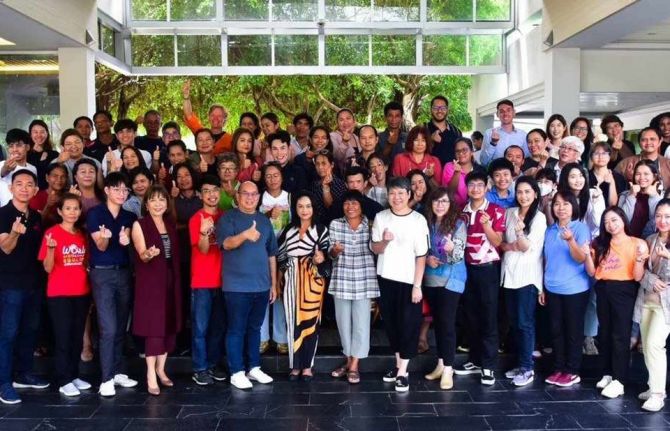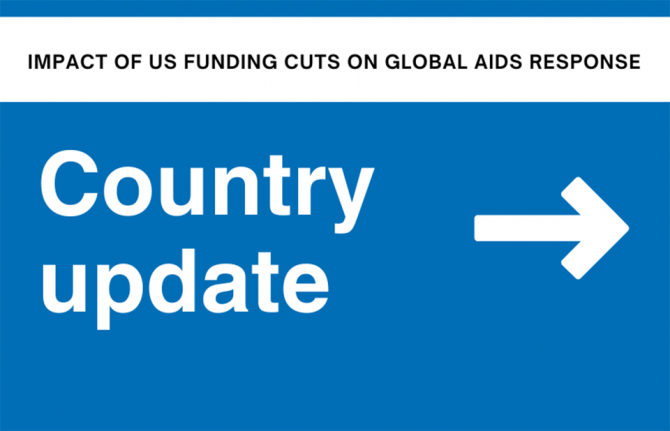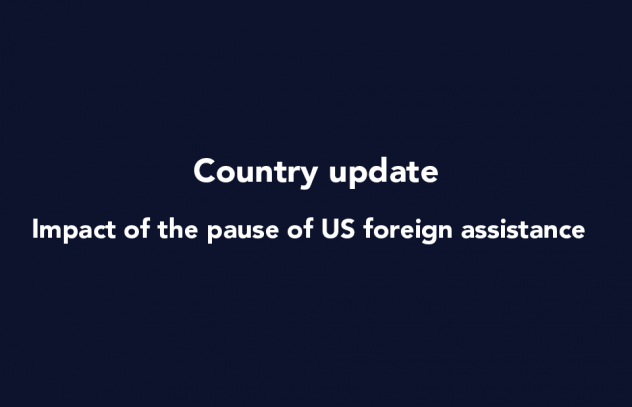
Feature Story
Thailand launches new AIDS strategy to ‘Get to Zero’
22 June 2012
22 June 2012 22 June 2012
Thailand’s Deputy Prime Minister and chair of the National AIDS Committee, H.E. General Yuttasak Sasiprapha giving an address at the launch of Thailand’s new national AIDS plan.
Credit: UNICEF Thailand / P.Kitatnaruyuth
Thailand has become the latest country in the Asia and the Pacific region to align its national AIDS strategy with the UNAIDS vision of getting to zero new HIV infections, zero discrimination and zero AIDS-related deaths.
Launching the country’s new national strategy on HIV/AIDS 2012-2016—entitled ‘AIDS Zero’—the chair of the National AIDS Committee, H.E. the Deputy Prime Minister General Yuttasak Sasiprapha noted that, “Thailand has a long tradition of close cooperation between government, non-government organizations, civil society, communities and private sector, and this working together will lead Thailand to ‘AIDS Zero’.”
Over the past 25 years, Thailand has become known as a model for its rapid and multi-sectoral HIV response. Early investments in the HIV epidemic have shown concrete results including in the elimination of new infections among children—nearly 97% of women living with HIV in Thailand are now accessing services for the prevention of mother-to-child transmission. There has also been a dramatic increase in providing access to HIV treatment which is now a reality for nearly 80% of all in need.
However, despite significant progress, the country is still experiencing concerning trends among key populations at highest risk including people who inject drugs, men who have sex with men and sex workers, particularly in urban centres. National spending data shows that investments in HIV prevention are under-resourced, particularly for programmes focused on populations most at risk of HIV.
The new national AIDS strategy addresses two critical questions: What is Thailand doing well that should continue, and what needs to change to get to zero new HIV infections, zero AIDS-related deaths, and zero discrimination? Accordingly, the plan has two main strategic directions: ‘Innovation and Change’ and ‘Optimization and Consolidation’.
The ‘Innovation and Change’ prong focuses on promoting strategies to better prevent new HIV infections—particularly among key affected populations; to better localize responses and ownership at the sub-national level; and to better address the socio-environmental factors which hinder access to HIV prevention and care services, and fuel stigma and discrimination.
Under the ‘Optimization and Consolidation’ section, strategies aim at continuation, optimization and sustainability of proven programmes already carried out in the country. Examples of strategies falling under this area are on the elimination of new infections among children and HIV prevention among young people, where Thailand has already seen significant progress.
Among the strategic goals emphasized in the new plan is the aim to reduce new HIV infections by two thirds by 2015—over and above the global goal agreed through the 2011 Political Declaration on AIDS of reducing new infections by 50%. The strategy also aims for total elimination of new HIV infections among children.
Thailand has a long tradition of close cooperation between government, non-government organizations, civil society, communities and private sector, and this working together will lead Thailand to ‘AIDS Zero’.
H.E. the Deputy Prime Minister General Yuttasak Sasiprapha, Chair of the National AIDS Committee
“The new approach recognizes that while impressive progress has been made in a number of areas in Thailand, there is still room to push forward on certain priorities that may have already been defined in the past but have thus far not been implemented,” said UNAIDS Country Coordinator for Thailand, Michael Hahn. “By operationalizing these new strategies—and ensuring dedicated resourcing through domestic and international sources—Thailand is taking critical steps towards making ‘getting to zero’ a reality in the country.”
Representatives from government, civil society and the international community agreed that the most important thing now is turning the strategy into action as soon as possible. It was also highlighted the need for stakeholders to mobilize adequate resources, national leadership, and effective management to ensure that the Thai national AIDS strategy moves from principle to reality.
In Asia and the Pacific, a number of countries and regional bodies have realigned their national strategies and goals around the ‘Getting to Zero’ vision. At their 2011 Summit, the ASEAN Heads of State adopted a Declaration to ‘Get to Zero’ on HIV and reaffirmed their commitment in working towards realizing an ASEAN community with Zero HIV Infections, Zero Discrimination and Zero AIDS-related Deaths.



